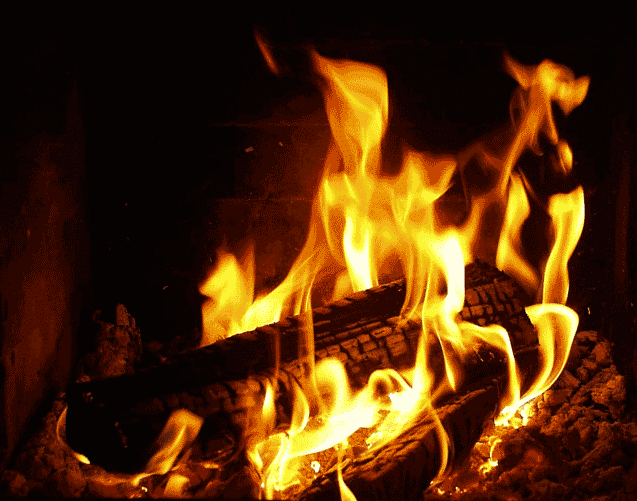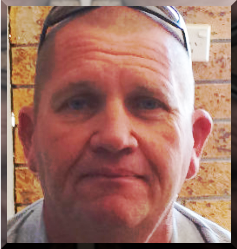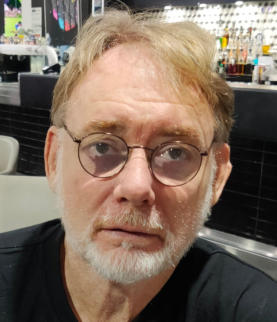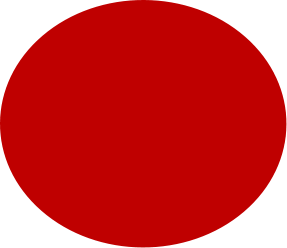
PORT STEPHENS Amateur Radio Club


Would you like to become a
licensed amateur radio
operator?
If you would like to explore amateur radio as a hobby, you are welcome to come to the meetings and let people know of your interest. Before you can key your first transmission, you must obtain a licence from the Australian Communications and Media Authority (ACMA). To receive a license you must pass an exam, but this is not nearly so hard as it might seem. There are three levels of licence, and the entry level is relatively easy. Port Stephens Amateur Radio Club has amongst its members those who are qualified to supervise exams at all three levels. So when you feel ready, you can sit for an exam at the club meeting site.
Next Meeting
Please note we have changed to normally
have meetings on the second Sunday of
the month at the Tilligerry (Tanilba Bay)
RSL & Sports Club.
The next meeting will be on Sunday
November 9 at 10:30 am.


Club repeater nets as follows:
Tuesday nights 7:30 pm - 8:30 pm
70 cm Analogue Repeater
For frequencies & CTCSS see here.
Thursday nights 7:30 pm - 8:30 pm
70 cm Digital (DMR) Repeater
Talk Group 3809 or the bridged
Brandmeister TG 5059
For frequencies see here.
All licensed amateur operators are welcome
to join in the nets.
Welcome
Is this what you are looking for?
Encouraging Amateur Radio Operators
All around the world, governments have allocated portions of the radio frequency spectrum for use by licensed amateur radio operators. These operators, sometimes known by their nickname of ‘Ham Radio’ operators, explore, experiment with, and enjoy the ability of radio waves of varying wavelengths, to permit communication across distances without wires. Port Stephens Amateur Radio Club exists for the purpose of encouraging amateur radio operators within its region to enjoy their hobby, and to advance through the various levels of licensing in order to develop a greater knowledge and ability. The monthly business meeting is usually followed by a talk on some aspect of amateur operations. A great deal of knowledge is also exchanged through the informal conversations over a ‘cuppa’ around the tables after every meeting.
PORT STEPHENS Amateur Radio Club

About Radio Waves
The electromagnetic spectrum
From the 16th through to the 19th century, European researchers explored the relationship between electricity and magnetism. This culminated in the work of Scottish physicist James Clerk Maxwell, who proposed the existence of electromagnetic radiation across a continuum from radio waves at the lower end of the spectrum, to light waves, and then upward to ultraviolet, x-ray and gamma waves at the higher frequency end. Maxwell’s theory about radio waves was confirmed by the work of German professor, Heinrich Hertz, and Italian researcher, Guglielmo Marconi, who developed proof of concept and practical radio transmitters and receivers. It was within that range of electromagnetic radiation known as radio waves that amateur operators found their field of exploration. This covers a rather large field of frequencies and their associated wavelengths.Transceivers and Antennas
Nowadays, radio transmitters and receivers are generally combined into a single “transceiver”; and the point at which electrical fields either leap out into the world as electromagnetic waves, or where those waves are converted back into electrical current, is known as the antenna. Much work is done exploring sophisticated transceivers and the many different types of antenna that can be constructed.Propagation of Radio Waves
Radio waves are able to travel beyond line-of-sight by being refracted by a layer of the atmosphere known as the “ionisphere”. At the centre of our Solar System we have a star known as the Sun. The Sun consists of matter, compressed by its own gravity, to the point where nuclear fusion takes place. One consequence of this is that vast loops of magnetically charged matter leap up from the surface of the Sun and sometimes break free as Coronal Mass Ejections. These charged particles collide with the Earth’s atmosphere and create the ionisphere. Experience has shown that the Sun follows an eleven year cycle with respect to this process, so that the ability of radio waves to be refracted by the ionisphere varies with this Solar Cycle.Behavi
our
of
Radio
Waves
at
Different
Frequencies
Radio waves behave differently at different frequencies. High Frequency waves (HF) can be refracted by the ionisphere. Very High Frequency waves (VHF) may bend to some extent over small obstacles. Ultra High Frequency waves (UHF) are usually limited to line-of-sight, unless relayed by repeaters and other man-made devices, or through unusual atmospheric conditions.




PORT STEPHENS Amateur Radio Club

Technotalks
John VK2DLP gave two talks. One was on high-power power supplies and the other on S parameters. You can download the pdfs of his PowerPoint presentations below: High-Power Power Supplies S-Parameters Richard VK2OKR gave a talk on making a turnstyle antenna to the ARNSW and a copy of his presentation may be downloaded from here as either: a multipage Word document or a PowerPoint presentation. Part 1: Satellite Communications for the Amateur with Adam VK2YK Amateur Radio Satellites (PowerPoint Presentation) Voice Satellite Frequencies and Modes (pdf) Fox Operating Guide (pdf) Work FM Satellites (pdf) A Beginner’s Guide to Amateur Radio Satellites (PowerPoint Presentation) Amateur Radio Satellites V1 (PowerPoint Presentation) Part 2 of Adam VK2YK’s talk on Satellite Communications for the Amateur The talk covered digital modes and their relevance to satellite communications Click on this hyperlink for the Power Point Presentation Hotspots vs. Repeaters, What is the difference? John VK2DLP gave us a talk on this subject as we continue to understand the potential of our UHF repeater DMR Hotspots versus Repeaters.pdf Using QRZ.com with Richard VK2FRKO QRZ.com is a site where any amateur radio operator can leave all of his or her information. It now incorporates a log book. The talk/demo will demonstrate how to find the site, navigate around it, and create your own page. Contesting with Richard VK2FRKO, A.O. It sometimes seems there are not that many contacts possible across the HF frequency bands. At least until there is a contest on. Then the airwaves come alive with “CQ contest”; that is, people seeking to make as many contacts as possible within a defined period of time. But how can you participate? And what do you need to know to help make this a rewarding experience? Richard, our Club president, is an avid participant in contests and in this talk will explain how it all works. Contesting Amateur Radio Digital Voice with John VK2DLP John delivered this talk on 2nd June, 2019, and has inspired a number of Club members to investigate this mode further. Richard has undertaken to investigate the availability of cheap digital transceivers. For those needing a memory aid for John’s talk, his PowerPoint presentation is available here: Amateur Radio Digital Voice (PowerPoint Presentation) Vector Network Analyzers with John VK2DLP John delivered this talk on 1 July, 2018. Some of the illustrative material can be found here: The slide presentation given to the Club on 1 July, 2018. Demonstration of a VNA display at 2 metres wavelength Demonstration of a VNA display at 70 cm wavelength _________________________________ Club members and others may be interested in building their own UHF band antennas to increase their access to our Club’s repeater. Here are some links: Homemade 70cm Colinear Antenna YEZ 70cm Special - Sketch The following resource provides a mass of information to help you build your own UHF Yagi antenna. https://www.w6pql.com/antennas.htm Demonstration of a VNA display for a Low Pass Filter Response “Your RF Cable, the unknown Entity” - Professor Dr Thomas Baier, DG8SAQ The slide presentation in English and in pdf format





This page is currently under review and may change as a link from “Education”.

PORT STEPHENS Amateur Radio Club

Membership
Holding on to a passion
There is an old story about a man who was watching his camp fire one night. The fire was burning well, but every now and then an ember would be expelled from the fire with a crackling sound. The man watched the expelled ember, and soon saw it lose its heat. But the remaining embers remained in the fire and helped to inflame each other so that the fire kept burning. A similar things occurs with our passion for our hobbies. On our own, we can soon lose our enthusiasm. In the company of other amateurs we bounce off each other and keep the passion alive.Port Stephens Amateur Radio Club
Port Stephens Amateur Radio Club exists to create the second experience described above. We meet together on the second Sunday of every month at 10 :30 am, and also make on-air contact in the intervals between those dates. We learn from each other, and our on-air routines, once an occasion for anxietty, become second-nature.Joining the Club
If you feel that you would like to become a member of Port Stephens Amateur Radio Club, simply ask for an application form. There is an annual membership fee of $25 per year. Once you have completed the form, hand it in with the fee to one of our office bearers and your application will be put before the next business meeting.


The Club’s Constitution and it’s
Standard Operating Procedures
are available as pdf documents
here:
Constitution
SOPs
Membership Application Form
PORT STEPHENS Amateur Radio Club
Rogues Gallery
Our Executive Officers …
… and additional Committee Members
Key Resource People
… and the rest of the crew
Treasurer:
Leigh VK2KAL
President: Allan VK2LTP






Secretary: Richard VK2AUS









Sam VK2ZZ
Dan VK2GG
John VK2PBC
Vince VK2LPC
Henk VK2GWK
Sergio VK2GD

Mark VK2CMS
Harry VK2KOG
Peter VK2FPET
Jamie VK2YCJ
Warren VK2UWP

Silent Keys
















Getting or upgrading your
licence
Learning New Stuff
About our repeaters
How to use them


John VK4AJP
John VK2FJG

Wayne VK2WJS




PORT STEPHENS Amateur Radio Club
The Role of the Repeater Coordinator
The Port Stephens Amateur Radio Club has created the Repeater Coordinator position with the following responsibilities: 1. To ensure the club's repeaters comply with the ACMA's LCD for Amateur Repeaters 2. To maintain good working relations with our site host CSE Comms Ltd 3. To resolve any interference complaints attributed to the club's repeaters 4. To assist club members who may have problems accessing the club's repeaters 5. To explore additional technology which may allow members wider access to the worldwide networks of amateur repeaters
PORT STEPHENS Amateur Radio Club

Contesting and Awards
Next contest … 19 JUL 2025 The Trans-Tasman contest, held on the 3rd weekend in July, aims to encourage Low Band activity between VK and ZLOnly. Contest bands 160 80 and 40M are allowed with SSB, CW and Digital (RTTY OR PSK). From 2018 this contest is an official WIA Contest and will count towards the Peter Brown Contest Champion Awards. Aim Of The Contest Work as many VK and ZL Prefixes and as many different stations on 160 80 and 40M in a short 6 hour evening contest..Have You Heard About World Wide Flora and Fauna in Amateur Radio?
Adam, VK2YK, went on an expedition to an island by kayak. Then, out of a small bag of tricks, he pulled out the components of a radio system and began to make contact as part of the World Wide Flora & Fauna (WWFF) contest. You can see Adam in action in the short YouTube video made by VK2MRX. Click on the Play arrow in the graphic below. For more in formation on World Wide Flora and Fauna in amateur radio, check out the following links: http://wwff.co/ https://www.wwffaustralia.com/index.html

PORT STEPHENS Amateur Radio Club

To get HF predictions from VOACAP you will need one of the following browsers:
•
Mozilla
•
Firefox
•
Google Chrome
•
Microsoft Edge
•
(Microsoft Explorer is not supported)
VOACAP HF Online Predictions An online manual is provided on their website.

PORT STEPHENS Amateur Radio Club

Contact
The Secretary, Port Stephens Amateur
Radio Club
PO Box 3O13 Lemon Tree Passage NSW 2319 Secretary: Richard Osborne O.A.M. Email: secretary@portstephensarc.org Also Treasurer: Leigh Aanensen Email: treasurer@portstephensarc.org President: Allan Hill Email: president@portstephensarc.org Education Coordinator: Carl Terpstra education@portstephensarc.org



PORT STEPHENS Amateur Radio Club

The Club’s UHF Analogue and Digital Repeaters
There
have
been
some
exciting
developments
in
our
Repeater
Project.
After
the
establishment
of
our
initial
UHF
analogue
repeater
on
Gan
Gan
Hill,
we
discovered
that
our
licence
conditions
permit
the
operation
of
a
second
repeater.
Project
leader,
VK2DLP
–
John,
suggested
a
second
repeater
operating
in a Digital Mobile Radio mode and this move was endorsed by the Club.
If you simply want to jump to the frequencies and tones necessary to operate the repeaters, click here:
Table of Frequencies and Codes.
Digital
Mobile
Radio,
(hereafter
summarised
as
DMR),
can
operate
in
similar
way
to
the
analogue
repeater,
linking
operators
within
physical
range
of
the
repeater.
However,
DMR
also
offers
the
ability
to
speak
to
other
operators
all
around
the
world
through
predefined
Internet
links
of
many
repeaters.
Operators
can
choose
the
scope
of
these
Internet
links
by
configuring
the
channels
in
their
transceivers.
Consequently,
someone
operating
on
a
handheld
transceiver
near
the
Club’s
DMR
repeater
at
Nelson
Bay,
NSW
Australia,
can
speak
to
other
operators
within
the
State,
within
the
nation,
or
around
the
world,
depending
on
the
way
they
have
configured
channels
in
their
digital
transceiver.
Members
of
our
Club
are
currently
learning
how
to
do
this
by
importing
into
their
transceivers
“code
plugs”,
which
have
channels already set up for this purpose.
Our
digital
repeater
can
also
operate
in
analogue
mode.
However,
when
digital
transmissions
are
flowing
through
the
repeater,
the
analogue
function
is
locked
out.
After
some
discussion,
it
was
decided to continue to use the original analogue repeater for our Tuesday night nets (7:30- 8:30 pm).
Getting the repeater antenna up
or
“Climbing a Stairway to Heaven”
Clearly,
the
height
and
radiation
pattern
of
a
repeater’s
antenna
will
affect
its
performance.
The
UHF
analogue
repeater’s
antenna
is
an
omni-directional
vertical
folded
dipole
which
sits
at
a
height
of
approximately
167
metres
above
sea
level
and
has
“unity
gain”.
This
means
its
radiation
lobe
resembles
a
donut
and
is
more
effective
at
reaching
transceivers
which
are
close
to
and below it.
The
UHF
digital
repeater’s
antenna
is
an
omni-
directional
vertical
co-linear
with
9dBd
gain.
This
means
that
its
radiation
pattern
is
concentrated
into
a
flatter
plane
than
the
unity
gain
antenna
used
for
the
original
analogue
repeater.
Thanks
to
the
assistance
of
Gencom,
we
were
able
to
have
this
antenna
mounted
by
a
licensed
rigger
high
atop
the
tower
on
Gan
Gan
Hill.
Consequently,
the
Club’s
9
dBd
antenna
for
the
digital
repeater
is
mounted
at
a
height
of
169
metres
above
sea
level.
The
adjacent
photo
shows
the
rigger
ascending the tower.

Analogue Repeater
Transmits On Receives On
Tone
Repeater Setting
439.7 MHz
434.7 MHz
Your
Transceiver Setting
434.7
439.7
91.5 Tx only
Digital Repeater
Transmits On Receives On Colour Code
Repeater Setting
438.825
431.825
1
Your Transceiver Setting
431.825
438.825
1
Table of Frequencies and Codes
Note that transmit and receive frequencies of your transceiver are the opposite of those of the repeater; and that no CTCSS tones are to be used when operating a digital channel.
Check your success in connecting with the temporary dashboard for VK DMR
http://43.245.72.66/ipsc/index.html
If you would like to know more about DMR, the following is a link to a guide by
John S. Burningham, D.I.T (W2XAB/WQON496)
AmAAmateur Radio Guide to DMR
VK2RUM
(Newcastle)
Transmits On Receives On Colour Code
Repeater Setting
438.625
431.625
1
Your Transceiver Setting
431.625
438.625
1
VK2RNC
(Newcastle)
Transmits On Receives On Colour Code
Repeater Setting
438.675
433.675
1
Your Transceiver Setting
433.675
438.675
1
VK2RGL
(Great Lakes)
Transmits On Receives On Colour Code
Repeater Setting
439.775
434.775
1
Your Transceiver Setting
434.775
439.775
1
Talk Group 3809 can also be accessed through other DMR Repeaters as follows in the table below:
VK2ROJ (Nelson Bay)

This page is currently under review and may change
following the purchase of a new repeater. Stay tuned.

PORT STEPHENS Amateur Radio Club

Repeater Upgrade-Update
Firstly, the AllStar node has been updated to the latest version of Hamvoip 1.7-06 (no visible changes).
Second,
the
previous
standalone
DVSwitch
node
(previously
only
a
separate
image,
has
allowed
DVSwitch
to
be
integrated
onto
the
same
device
as
the
AllStar
node
as
a
private
node
1999.
This
will
provide
improved
latency in the first instance but also offers dynamic TG changes to Brandmeister DMR – more on this later.
As a result, there is a new Dashboard here:
http://vk2roj.duckdns.org:82/alltune/
This
new
dashboard
is
a
tabbed
interface
to
several
components
on
the
node
as
well
as
links
to
external
dashboards
AllStarLink
–
Keyed
Nodes,
Brandmeister
Lastheard
VK2AOJ
and
TGIF
Last
heard.
The
upgraded Supermon 2 is also one of the tabs.
Two
new
additions
to
the
mix
are
Allscan
and
Alltune.
Allscan
is
a
dashboard
which
provides
live
scanning
of
the
Favourite
Nodes
List
to
reveal
current
activity
and
number
of
connections
on
each
node.
Quick connect to an AllStar node is also available on this dashboard.
The Alltune Dashboard provides which dynamic connect to alternative Brandmeister TalkGroups which
are listed on the favourites list or of your choosing.
Opportunities
Only one DMR talkgroup at a time can be linked, but this new interface provides an opportunity to mix it
up a little for Tuesday night Nets.
It would be possible to alternate the use of TG 46110 with one of the VKDMR/Brandmeister bridged
talkgroups which used to be state based but are now just chat groups. The 3801-8 VKDMR talk groups are
bridged to the 5051-8 Brandmeister talkgroups. So it is easy enough to switch from 46110 to one of these
505N talkgroups and see who is interested to join the net.
At this time, Brandmeister TG46110 will remain the default DMR connection and the Echolink service
remains unchanged. But either on a sked, or announced prior, the net could QSY to another talkgroup.
Knowledge of the dashboard is an advantage. In the case of anyone being late to the party, they could
see from the Dashboard where the net is and be able to re-join.
This may offer a chance to broaden our horizon to people who have one of the VKDMR 380N talkgroups
sitting as static on their hotspot. Another example is the Westlakes net on Sunday mornings on VKDMR
3802 could be linked into the ROJ Analog repeater.
You may have other ideas….
This new infrastructure offers a possible future connection to the Westlakes DStar repeater.





















